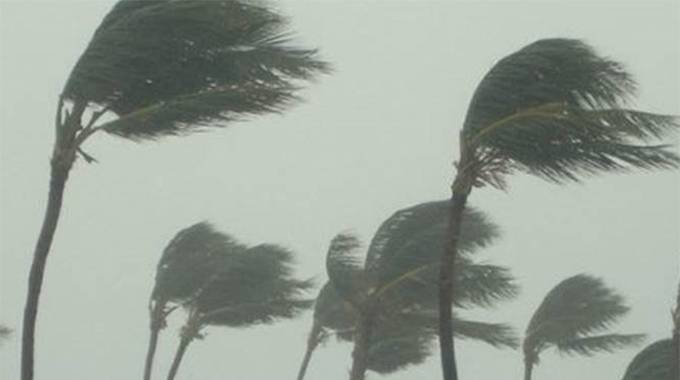Zim’s disaster preparedness in focus as cyclone Idai moves inland

Jeffrey Gogo Climate Story
Idai has reached the Zimbabwean shores. The tropical cyclone that has devastated Mozambique is expected to bring heavy rain accompanied by gusty winds in areas along the eastern border as well as in Mashonaland Central and Masvingo provinces starting March 15.
The worst, and not unlikely, result is flash flooding, particularly in hotspots zones like Muzarabani and Save Valley.
It is rather cruel irony that a drought year will be capped off by a tropical cyclone yielding too much rain, when much of the crops are already a complete write off.
But the Meteorological Services Department (MSD) has all but signed off on the dreadful rain events taking place. That’s what their computers – often a subject of ridicule from an unclear public – are telling them.
“Tropical cyclone Idai, after landfall, is expected to take a north-westerly trajectory moving further inland reaching Zimbabwe by Mar. 17,” the meteorologists warned last Thursday.
“If the projected movement of the cyclone is maintained, this should continue to bring moisture over most parts of Zimbabwe with significant rainfall (at least 30mm in 24 hours) over Masvingo, Manicaland, Mashonaland East and Mashonaland Central.”
On March 15, Harare woke up to some light winds in overcast conditions – as per the MSD’s predictions. It drizzled in a few places.
But it is the high risk areas such as Muzarabani or Chibuwe or Chisumbanje were the greatest concern lies, in the likely event of the tropical cyclone resulting in flash flooding at the scale of the havoc it has wrought in Mozambique. Dozens of people have been killed there and several thousand others displaced or left homeless.
Once again, this will be a litmus test for Zimbabwe’s preparedness to handle disaster situations, which, as a result of climate change, have become more frequent, intense and damaging.
Past experiences do not inspire so much hope. We understand the Civil Protection Unit has started preparing villagers in vulnerable areas for the worst, advising them of things like moving to higher ground once the rains begin, or even when they haven’t actually started.
These are areas that have endured multiple disasters in the last 20 years.
The disasters invariably alternate between drought and floods in different seasons, sometimes in back-to-back seasons, or as the case is now, in a single season, causing widespread hunger, human and animal suffering. Barring ignorance, one would expect a great number of the villagers to be accustomed to the practice of moving to higher ground once warnings of floods start to filter through.
But a cultured reminder by the CPU at the precise time of disaster will certainly add some urgency.
There is no doubt that the Civil Protection Unit is faced with the threat of floods on a large-scale.
The Unit has often been blasted for being slow and ill-prepared responding to disaster situations, both before and after the event. In the face of climate change and global warming, Zimbabwe needs to raise the bar on disaster risk management and preparedness.
The trend is to merge these responses with climate change adaptation, as the majority of present-day natural disasters are now directly linked to the science.
Such strategies can help Zimbabwe redefine its development assistance by working harder to use the national wealth to meet priorities of the poor – however little those savings may be.
Strained for funding, the CPU should – during times of calm – transfer some of the work to vulnerable communities themselves by strengthening their ability to combat disasters through serious and rigorous educational and awareness campaigns.
Improving knowledge and information at the grass root level for disaster response and risk reduction can prove effective and efficient in times of hardship.
The CPU may also explore the benefits of promoting multi-stakeholder partnerships by creating synergies with better-funded organisations in the civic sector.
When disaster strikes, the Unit’s role may then be reduced to mobilising additional humanitarian aid like food, water, shelter and health care and protecting critical facilities such as schools and hospitals.
God is faithful.











Comments